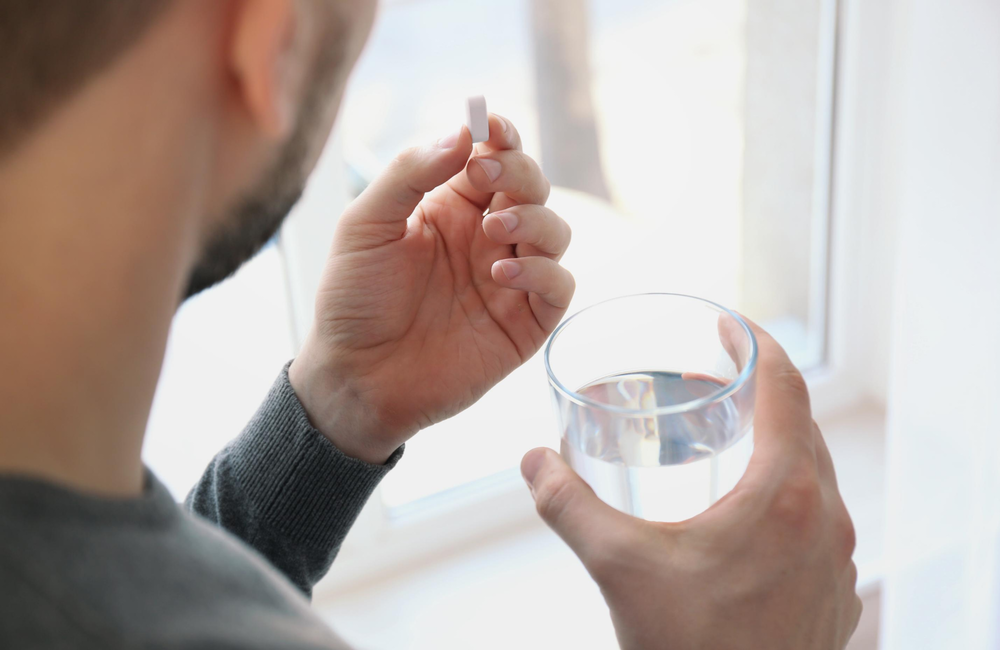
Tenofovir-based HIV pre-exposure prophylaxis (PrEP) does not provide protection against infection with the new coronavirus, nor does it ameliorate the course of COVID-19 disease, Spanish research published in Open Forum Infectious Diseases suggests. Indeed, prevalence of SARS-CoV-2 (the scientific name for the virus that causes COVID-19) was actually higher among people taking PrEP compared to individuals who were not.
“Both groups included men who have sex with men and transgender women with a similar risk profile for SARS-CoV-2 virus except for the use of PrEP,” comment the authors. “Despite this, the group with PrEP had the highest seroprevalence.”
The take home message from the study is that people taking PrEP need to adopt the same COVID-19 prevention measures as people in the general population.
There is conflicting evidence about the efficacy of anti-HIV drugs as a treatment for COVID-19. It is theoretically plausible that some antiretrovirals, including both tenofovir formulations (TDF and TAF), may have an inhibitory effect on SARS-COV-2. However, this has not yet been conclusively proven.
A research team in Madrid, led by Dr Oskar Ayerdi, designed a comparative study, measuring prevalence of SARS-CoV-2 amongst PrEP users and non-PrEP users. The research also compared the clinical characteristics and course of COVID-19 disease between both groups.
Participants were recruited at a sexual health clinic in Madrid between early May and late June 2020. Recruitment was limited to gay men and transgender women. The first study group comprised 250 individuals who were taking neither PrEP nor any other antiretroviral. The second group consisted of 500 people taking tenofovir/emtricitabine PrEP; of these, 401 were taking TDF, the remaining 91 took TAF.
Information was obtained about the participants’ demographic characteristics, risk factors for severe COVID-19 disease and use of medications used to treat COVID-19. Participants were tested for antibodies to SARS-CoV-2.
Almost all the participants were men who have sex with men, with just 5 transgender women. The PrEP group was slightly older than the non-PrEP group (average, 37 vs 35 years). There was no difference between the groups regarding the risk of exposure to SARS-CoV-2. This was measured by accounting for factors such as occupational exposure and living with a person with known infection. Nor were there any statistically significant differences between PrEP users and non-users when it came to risk factors for more severe COVID-19 disease (for example, age, race, hypertension, diabetes and obesity).
However, 9% of people taking PrEP were taking medications potentially associated with the treatment of COVID-19. But only 4% of non-PrEP users did the same – a statistically significant difference (p = 0.024). Approximately two-thirds of PrEP users took at least 85% of their doses with no difference between TDF- and TAF-containing regimens.
"The higher SARS-CoV-2 prevalence observed in the PrEP group could be linked to sexual behaviour."
Prevalence of SARS-CoV-2 antibodies was 9% in the non-PrEP group compared to 15% in the PrEP group, a statistically significant difference (p = 0.026). Prevalence did not differ greatly according to PrEP regimen (TDF/emtricitabine = 15% and TAF/emtricitabine = 17%).
The investigators speculate that the higher SARS-CoV-2 prevalence observed in the PrEP group could be linked to sexual behaviour.
“Several publications have associated the use of PrEP with a greater number of sexual contacts without the use of condoms and a higher presence of sexually transmitted infections, mainly in rectal locations. In addition, the possibility of oral-fecal transmission of SARS-CoV-2 and the presence of the virus in semen have been evidenced,” write Dr Ayerdi and colleagues. “For these reasons, the community exposure to SARS-CoV-2 among PrEP users was able to be higher than that of the control group, which would explain the higher seroprevalence.”
Of the people with a positive SARS-CoV-2 antibody result, 57% of PrEP users experienced COVID-19 symptoms compared to 78% of the control group. But this difference was not statistically significant.
The average duration of symptoms was nine days for the PrEP group compared to 12 days for the non-PrEP group. Once again, this difference lacked statistical significance. Analysis according to PrEP type showed that symptoms lasted for an average of 13 days among individuals taking TAF-based therapy compared to seven days for those taking TDF/emtricitabine, a non-significant difference.
Five of the SARS-CoV-2-positive individuals were hospitalised with COVID-19, four of whom were taking PrEP. One individual taking TAF/emtricitabine was admitted to intensive care.
“Users of PrEP, TDF/emtricitabine or TAF/emtricitabine, presented a higher seroprevalence to SARS-CoV-2 than the control group and no statistically significant differences were found in relation to clinical manifestations,” conclude the investigators. “In the absence of further studies, PrEP users should use the same prevention measures as those indicated for the general population.”
Ayerdi O et al. Preventive efficacy of tenofovir/emtricitabine against SARS-CoV-2 among PrEP users. Open Forum Infectious Diseases, ofaa455, published online ahead of print, 25 September 2020 (open access).
